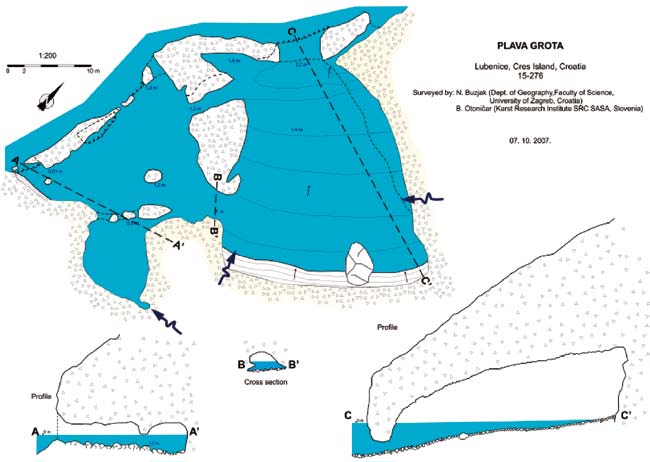Flank Margin Cave Development in Carbonate Talus Breccia Facies: An Example from Cres Island, Croatia
DOI:
https://doi.org/10.3986/ac.v39i1.114Abstract
Plava Grota, Cres Island, Croatia, is a flank margin cave developed in a coastal setting in talus breccia facies. The internal cave geometry of small entrances, intersecting adjacent chambers, remnant dissolutional bedrock pillars, and low arches matches diagnostic features used to separate flank margin caves from epigenic stream caves on one hand, and sea caves on the other. Plava Grota is found, along with adjacent smaller caves, solely in a breccia facies that is most probably of Pleistocene age. This breccia is comprised of clasts derived from diagenetically mature, or telogenetic, Cretaceous carbonate rocks. The clasts are loosely cemented by vadose calcite cements. The breccia facies provide a three-dimensional porosity and permeability structure that behaves hydraulically in a manner similar to the high primary porosity and permeability of young eogenetic carbonate rocks in settings such as the Bahamas or Puerto Rico, and the many flow paths found in highly-tectonized telogenetic carbonate rocks in New Zealand. Plava Grota is the first described flank margin cave from the coastal carbonate rocks of the Adriatic Sea. According to present sea-level position in relation to the cave, fresh-water springs in and adjacent to the cave, general tectonic subsidence of the area and Quaternary eustatic sea-level fluctuations, we propose the hypotheses that the cave was primarily formed during the MIS 5e sea-level highstand.
Downloads

Downloads
Published
How to Cite
Issue
Section
License
Authors guarantee that the work is their own original creation and does not infringe any statutory or common-law copyright or any proprietary right of any third party. In case of claims by third parties, authors commit their self to defend the interests of the publisher, and shall cover any potential costs.
More in: Submission chapter




